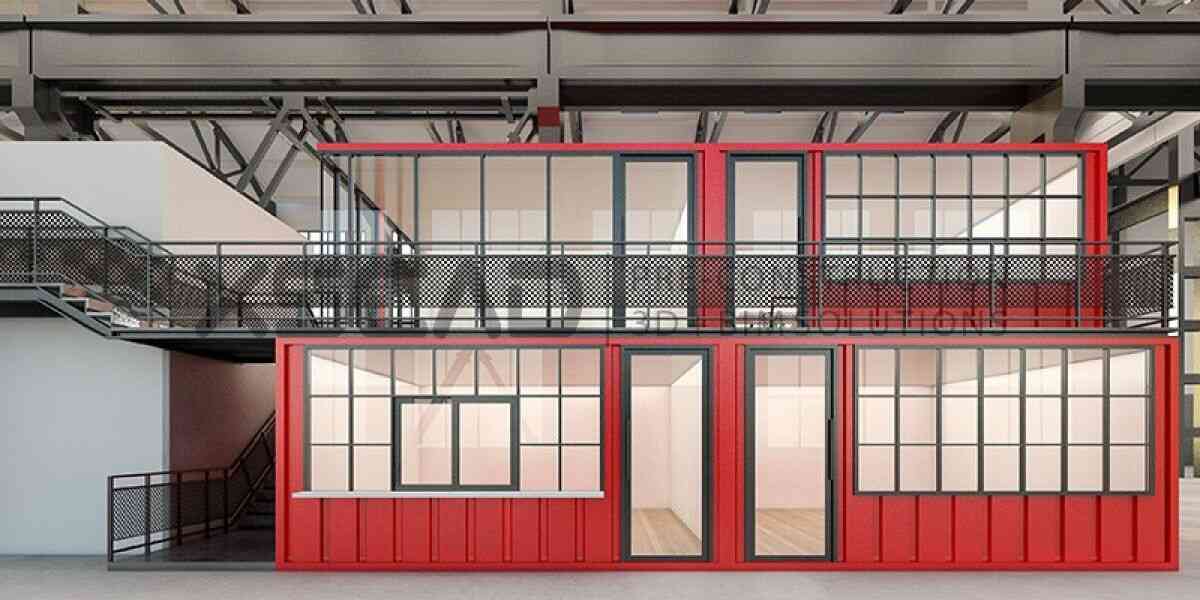Exploring ‘Macro’, ‘Median’ & ‘Micro’ Prefabrication
- - Category: Constrution
- - 22 Apr, 2021
- - Views: 801
- Save

The variety of prefabricated items today mandates categorisation, namely ‘macro’, ‘median’ and ‘micro’ prefabrication.
Modern concepts breed modern lingo. Hence, the growing phenomenon of prefabrication, or DfMA (Design for Manufacture and Assembly), in the construction industry is gradually leading to the introduction of new terms. The sheer variety and scope of prefabricated items today mandates a certain kind of categorisation, namely ‘macro’, ‘median’ and ‘micro’ prefabrication. Near-flawless DfMA modelling and drawings can support the development of these different types of prefabricated items for their widespread use in the building construction industry and beyond. Let’s explore.
Prefabrication, where components are assembled in a factory or other site and completed assemblies are transported to the construction site, has a few derivative explanations. We also call it prefabrication when items of various sizes and complexities, such as machine sections or movable structures, are manufactured at a fixed site and are then supplied assembled and ready to fit or install.
Why else do we like prefabrication? The advantages of prefabrication can be summed up as follows:
- Reduced costs moving partial assemblies from a factory rather than individual parts to each site
- On-site resources are costly; prefabricated assemblies reduce work on site and save money.
- Tools in factories, such as jigs, cranes, conveyors, etc., improve accuracy and reduce production delays.
- Shake tables, hydraulic testers, etc. used in prefabrication add to quality assurance
- Indoor environments protect production of prefabricated elements from the weather
- High-precision tools can help create improved control of heat and air movement in buildings, resulting in low energy consumption.
- Factory produced components help maximise materials usage, recycling, noise capture, etc.
Macro
When we say macro, median or micro, it refers to the complexity and completeness of the fabrication rather than solely the size. For example, macro fabrication tends to involve concrete walls, complete modular buildings, complete plant rooms, etc.
Apartment blocks and housing developments with repeated units can be constructed using prefabrication and fall under the macro category. Office blocks, warehouses and factory buildings with repeated elements and units can also benefit from prefabrication in the macro category. Facades of large buildings are increasingly being supplied with prefabricated steel and glass sections, further examples of macro prefabrication.
Other macro units with prefabricated elements include detached houses, cottages, log cabins, saunas, concrete pylons, etc.
Median
Prefabrication that can be considered ‘median’ includes machine components and sub-assemblies, but the line blurs with macro when it comes to single walls. While prefabricating modular walls, complex thermal insulation and window frame components can be created on an assembly line, improving quality.
Median prefabrication would also include bathroom pods, risers, ceiling modules and single walls for a project. Why use bathroom pods?
Advantages of Bathroom Pods
- Saves the coordination of several different tradesmen
- One contact for all bathroom construction aspects
- Reduces building time
- All design guidelines can be controlled and modified before construction
- Cost savings
- Varied combinations of structural elements and modular assembly
- One piece floor – 100% watertight
- Can modulate acoustics easily
What are some of the benefits of prefabricated single walls or ceiling modules?
- Finishing material can be used early on
- Includes batten(s)
- Uses wind protection elements
- Created with steel or timber frames
- Includes main frame and inside insulation
- Provides vapor barrier
- Uses inside gypsum board
- Can be lightweight
- Can be energy-efficient
- Can be made moisture resistant
- Consistent sizes
- Eco-friendly
Prefabricated parts of a machine are sometimes referred to as 'sub-assemblies' to differentiate them from other machine components. Prefabricated concrete and prefabricated steel sections, examples of median prefabrication, are widely used, as these parts are repeated several times.
Moulding concrete components on site and delivering wet concrete to the site before it sets can be messy, difficult, cumbersome and needs really good timing. Prefabricated steel sections reduce the time, costs and hazards associated with on-site cutting and welding.
Bridge elements and systems, part of median prefabricated elements, can be created to reduce construction time, improve safety and improve environmental impact, ease of construction and reduce costs.
Traffic congestion and parking difficulties near smaller sites can be avoided if prefabricated median elements are used.
Mobile phone towers can use a series of prefabricated sections, and lattice towers and guyed masts may also have prefabricated median elements.
Micro
Micro prefabrication can refer to MEP modules, modular risers, racks, valves, ducts, other simple individual components, etc.
Modular risers offer several advantages, namely:
- Prefabricated MEP riser and lateral modules offer an ideal solution for mechanical, electrical and public health services systems to be integrated spatially.
- Integrating with site-wide BIM models, the prefabricated MEP services can be designed and coordinated to allow extensive reviews, identifying possible clashes or design coordination concerns before fabrication.
- Structural loading and lifting calculations are conducted for each module, and precise BIM coordination helps seamless on-site positioning and installation. After installation, spool pieces are fabricated to connect modules.
- Sub-contractors can then pre-cast the modules into the slab, if so designed, or the modules can be taken to the site already fixed to pre-cast slabs, for improved workflow and quality.
- Risers can be developed in sections with flooring for the full riser structure to fit in articulated trailers for transport.
Although the boundaries between macro, median and micro prefabrication may seem fuzzy at times, different categories require different levels of complexity in design. Reliable modular construction services provided by experienced partners, including precise DfMA modelling and drawings as well as modular construction drawings, can help project managers and contractors manage large-scale projects with confidence.
